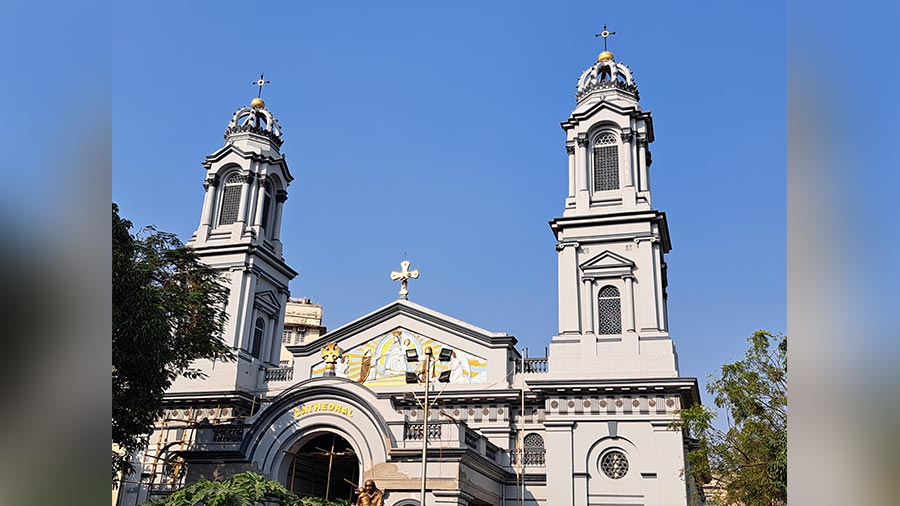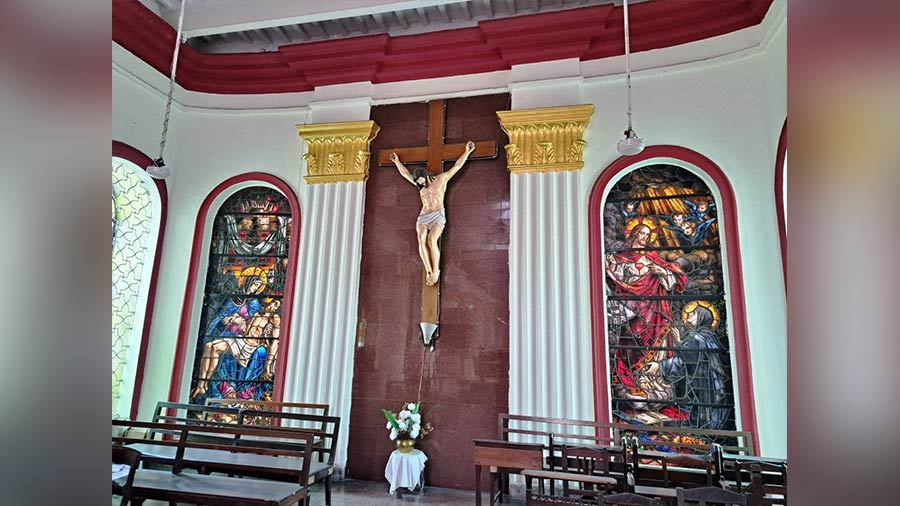The arrival of the Portuguese in Bengal and their prolonged influence in Bengal’s socio-political affairs is now mostly forgotten. Except for a handful of relics, some of which are poorly preserved, the Portuguese heritage is mostly overshadowed by other European invaders — mainly the British, Danish and French.
However, Kolkata still houses a huge tangible heritage at its heart — in the form of a huge cathedral. The church, which is a landmark of Burrabazar, is commonly called Murgihata Church or Portuguese Church. Only a few will recognise it by its official name — Cathedral of the Most Holy Rosary.
Unbelievable as it may sound, it was Portuguese traders who first started trading in Bengal from 1537 and had a habitat here much before the British, who came only in 1690. It is believed that Job Charnock arrived in Sutanuti under the shelter of the Portuguese and the Armenian.
A long and forgotten history
The Portuguese, in those days, had their settlement in today’s Dalhousie Square area, near the GPO and Koilaghata Street. They had a small mud house there which they used as their first church in the city. In 1693, the chief governor of the British East India Company, John Goldsborough, demolished that structure and Portuguese were forced to move elsewhere. Uprooted, the Portuguese built a small church in Murgihata in 1700. Murgihata was where many Portuguese people had settled and had poultry businesses — giving the place its name.
The church was built with the help of one Mrs Margaret Tench and later expanded with the help of another lady, named Mrs Sebastian Shaw, in 1720. Tombstones of these two ladies still remain in the church.

The interior of the church Wikimedia Commons
Considering the growing population of the Portuguese in the city, the church of Murgihata was demolished in 1796 to build the present cathedral. The foundation stone of this church was laid down on March 12, 1797, and finally, on November 27, 1799, it was solemnly blessed under the title of Our Lady of the Most Holy Rosary. The church was inaugurated by Rev Fransico De Santa Maria.
The total cost was Rs 90,000, out of which only Rs 30,000 was provided by the church authorities, while the balance was collected through donations from common citizens. Joseph and Luis Barretto, two wealthy Portuguese traders from Bombay, donated large sums in that.
A very different church
It is important to note that the structure of that church was very different from the one we see today. The architecture of that church was of Gothic style, with a single spire.
The present church was built in the late 1940s, when the old structure was again demolished. It was a time when the government was planning to expand the roads in that area, and the church was asked to move somewhere else. Though Christians agreed, local Hindus and Muslims protested and a new church was built at the same place — leaving space to expand the road.
Today, it stands like a giant structure in a most chaotic part of the city. Though sadly, over the years, its adjacent pavements have been encroached by hawkers — leaving only the two gates free.
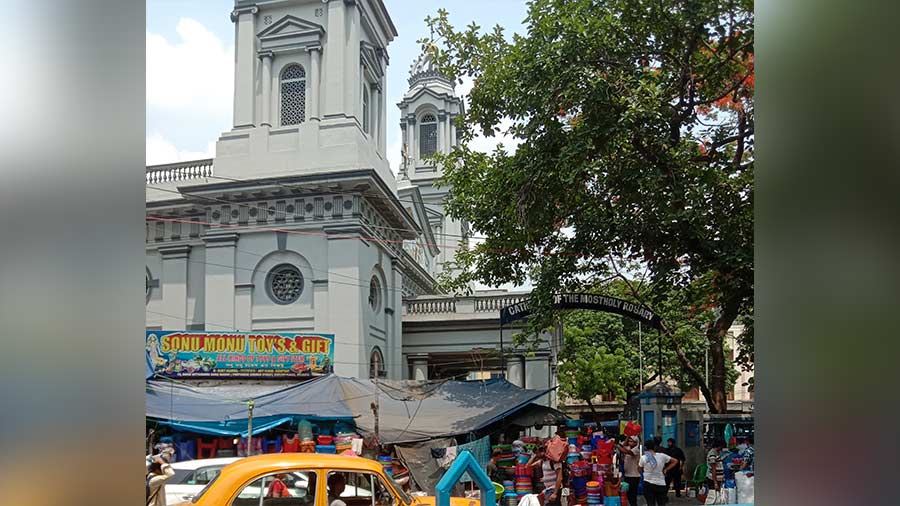
The pavements outside the church have been encroached by hawkers Wikimedia Commons
The atmosphere inside the church is very peaceful. It has two impressive towers that were added later. The towers look like Indo-Persian minarets and are crowned with cupolas and annexed by the Holy Cross. Between these two towers, there is a decorated pediment and an extended portico.
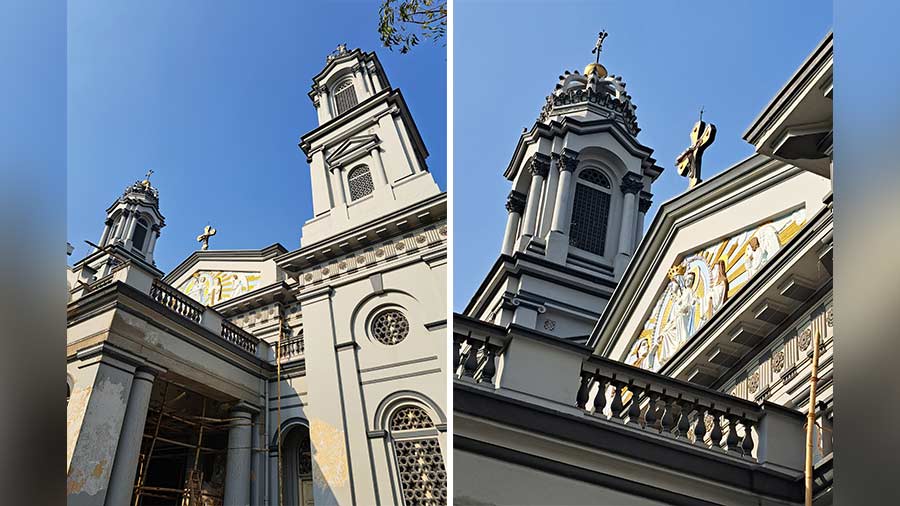
The church towers and the ornamented crown Somen Sengupta
Inside, one can see a nave passage with a high semi-domed roof. The nave runs from the gate to the rear. The magnificent altar is decorated with the statues of St. Peter and St. Paul on either side and there are two beautiful large candle stands, which are more than a 100 years old.
The reredos of the church, the most sacred part at the end of the altar, houses a grand statue of ‘Our Lady of the Most Holy Rosary’ It shows Mary holding baby Jesus in her arm. There is a statue of Jesus on the cross in front of it.
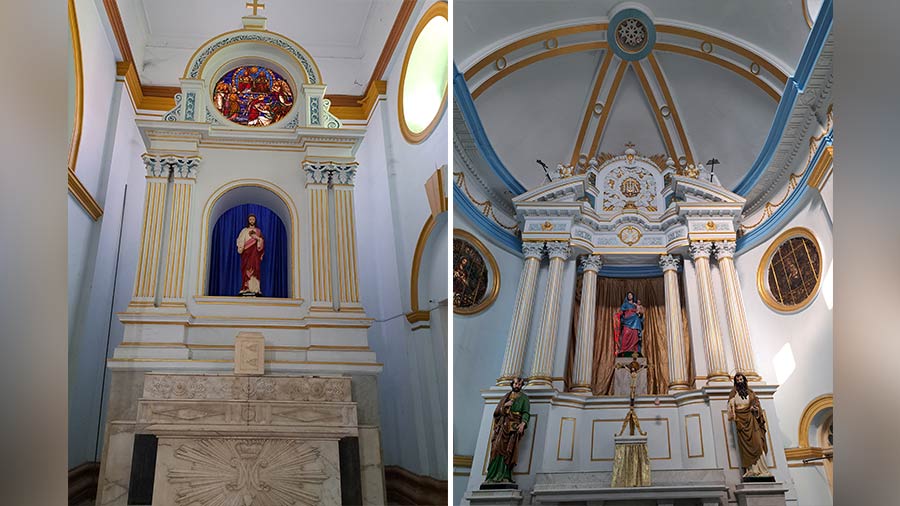
The altar and the statue of Mother Mary Somen Sengupta
There are several tactfully designed light holes decorated with colorful stained glass, describing various stories of Jesus. One of the key attractions of the church is an array of 14 woodcut stations of the Cross showing the crucifixion of Jesus.
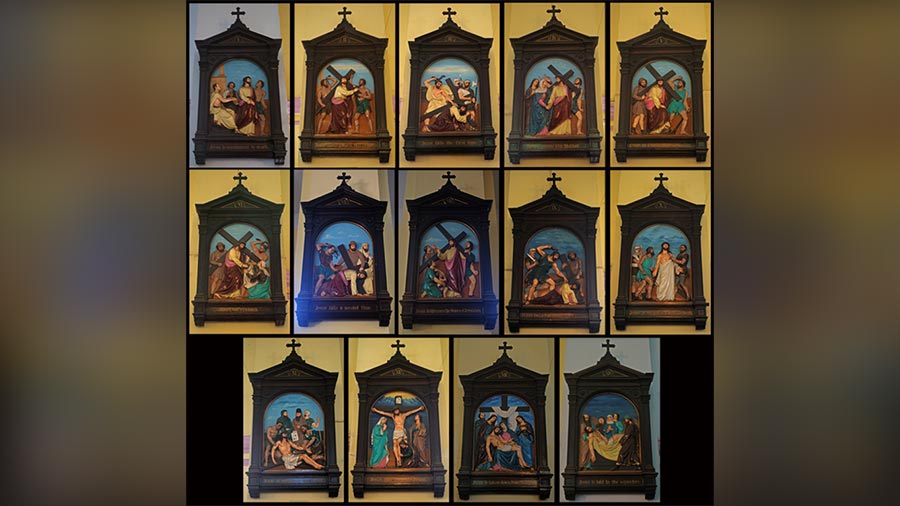
The 14 woodcut stations of the Cross showing the crucifixion of Jesus Wikimedia Commons
The walls and columns of the church have several dedicatory marble tablets, each of which are a testimony of Kolkata’s colonial past. Though many of those are written in Portuguese and Greek, some are written in English as well. Many tablets have stunning sculptures, adding an extra attraction.
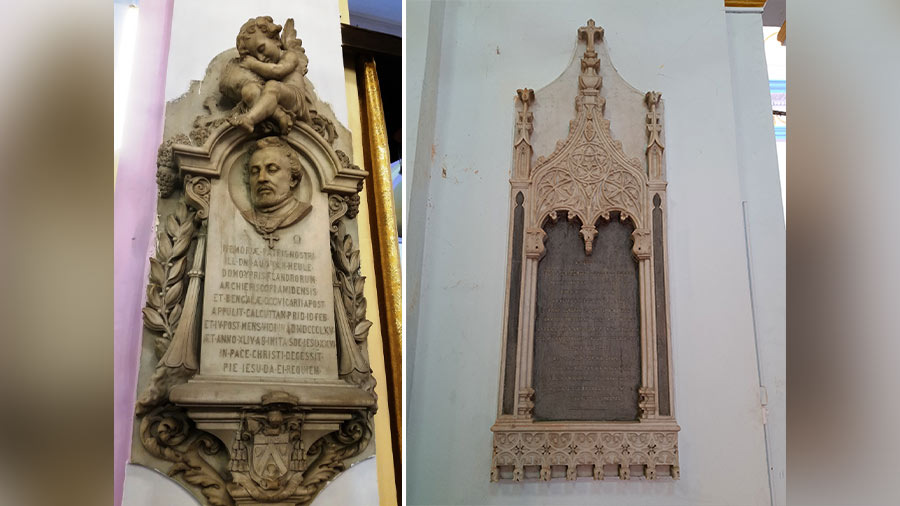
Two of the dedicatory marble plaques Somen Sengupta
One such tablet is dedicated to Rev Hippolytus More, S.J., who was also a former rector of St Xavier’s college. As per the tablet, he died on October 28, 1843. Now, the question is, with St Xavier’s College being founded only in 1860, which St Xavier’s college did this man belong to? That is a different story altogether!
Over 200-years old, the Portuguese church of Murgihata is now painted in blue and white, and stands like a sentinel of the colonial past of Calcutta — when the city was truly international and cosmopolitan in nature.
